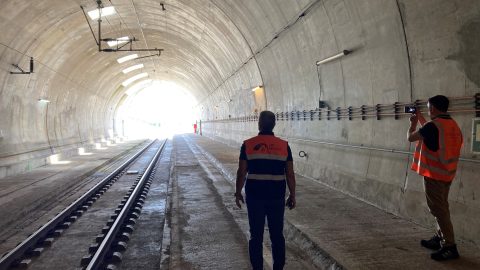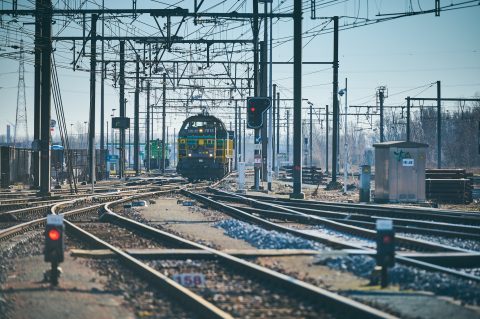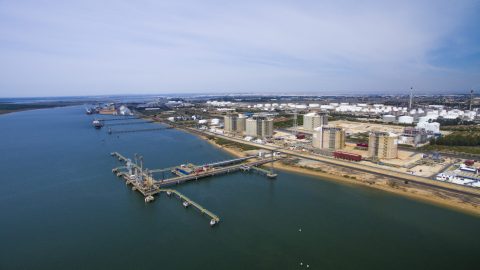Re-design of European timetable starts in December

A pilot phase proposing radical changes to the railway timetabling procedures of Europe starts in December 2017. Currently, international train operations are difficult to coordinate due to a lack of harmonised timetabling procedures between European countries. Within three years, the distribution of capacity on European railway should be harmonised under one central system.
RailNetEurope – RNE and Forum Train Europe – FTE are committed to the ambitious Re-design of the International Timetabling Process project, in short TTR. They aim to “remedy the unsatisfactory situation where international train operations are difficult to coordinate due to a lack of harmonised timetabling procedures between European countries”. The project, which concerns both freight and passenger traffic, is supported by the European Rail Freight Association (ERFA) and is well underway to commence the first pilot phase.
First phase
“In the first phase, stakeholders within the railway industry will discuss their current capacity needs. During this phase, we aim to understand these needs, in order to create a capacity model that more directly responds to the market”, Philipp Koiser, sales and timetabling manager at RNE explained.
Stakeholders are railway undertakings, but also infrastructure managers, rail freight corridors, ministries of Transport and various regulatory bodies. Currently, infrastructure managers handle the allocation of train path capacity and may do this according to various interests, such as commercial objectives, national policy or international aspirations.
The pilot will be applied on sections of three Rail Freight Corridors; on the Atlantic Corridor (Mannheim-Miranda de Ebro, connecting Germany and Spain), the North Sea – Mediterranean Corridor (Rotterdam-Antwerp, connecting the Netherlands and Belgium) and the Scandinavian Meditarranian Corridor (Munich-Verona, connecting Germany and Italy).
Immediate requests
An important shortcoming of the current international timetabling procedure is the unavailability of capacity requested on short-notice, explains Koiser. “Right now, railway undertakings are bound to require a train path eight months in advance of the timetable change. When they request a train path on short notice, they rely on the availability of residual capacity, which is often very scarce.
“In order to change this, we have proposed a new request method: the rolling planning request”, Koiser continues. “The rolling planning is based on safeguarded capacity, which is dedicated to later requests and which is assigned to this purpose in the capacity model. This should enable railway undertakings to request paths at any time and still get high quality paths. Quick response times and multi-annual request validity should provide the flexibility necessary in order to react to the volatile market, while at the same time still providing stability for upcoming timetable periods.”
Temporary Capacity Restrictions (TCR’s)
Temporary capacity restrictions form another hurdle for international train traffic, as these restrictions are not always properly coordinated and communicated. The TTR-project describes: “Although works are important for keeping the infrastructure in good shape, bad coordination leads to a waste of capacity. The commercial needs of infrastructure managers and applicants have to be considered.”
According to RNE and FTE, temporary capacity restrictions should be planned well in advance so they can be included in the timetabling procedure. They should be defined based on major, medium and minor impact restrictions, reads the plan.
Challenges
The project is an ambitious one due to its scale and the large variety of stakeholders involved. One of the biggest challenges of the TTR-members is to include all these stakeholders and make sure they are on the same page, considering the advantages of improved operability between European countries.
“We do see a change in behaviour; many stakeholders are willing to change their perspective”, said Koiser. “It is not necessarily the change in timetable, but the change in approach to developing this timetable that we consider the most radical step. It will no longer be the individual stakeholder, but a centralised system that drives the timetabling procedure. As such, IT specialists will also have an important role.”
Implementation
At this point, RNE and FTE are not able to tell what exactly needs to be changed to realise these objectives in the capacity model, as discovering this is the aim of the first pilot phase. “In this phase, we want to gather the demands of all stakeholders, regarding all sections. These may differ from line to line, even from section to section. With the results of this discussion, we will be able to develop a concept timetabling procedure, which will be tested in the second phase.”
The second phase is scheduled to be carried out in 2019. “During this process, the old and new timetabling procedures will be in place. Measures will be taken to avoid disturbances on the lines still using still the existing timetabling process. During this phase, we will have what we called a ‘hybrid system’ in place”, explained Koiser. The final phase will be the implementation of the new timetable, scheduled for 2020.
You just read one of our premium articles free of charge
Want full access? Take advantage of our exclusive offer





